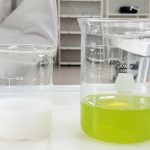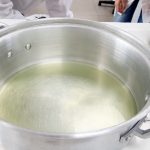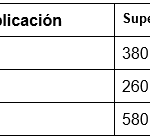PJ – MA – 86 Insecticida que no daña a las abejas
PJ – MA – 86 Insecticida que no daña a las abejas
Categoría: Pandilla Juvenil (1ro. 2do. y 3ro. de nivel Secundaria)
Área de participación: Medio Ambiente
Resumen
Nuestro proyecto consiste en la elaboración de un insecticida utilizando ajo , chile serrano , cebolla y jabón de pasta. La intensión además de ahuyentar a ciertas plagas que son comunes en jardines de nuestra región es no dañar a las abejas , ya que estos últimos insectos juegan un papel importante dentro de los sistemas ecológicos. Los resultados fueron excelentes ya que nuestro producto si bien eliminaba aquellos organismos que dañan los jardines como los pulgones negros y los Stenomacra marginella (los que cotidianamente llamamos Willis) a las abejas solamente las ahuyentaban en un lapso de tiempo corto y después regresaban a las plantas sin ningún daño aparente.
Con estos resultados consideramos que nuestro producto puede ser una solución muy eficiente y sobre todo que el daño que originaría al ambiente sería mucho menor que otros productos similares que se comercializan
Pregunta de Investigación
¿Cómo podemos eliminar los insectos nocivos de nuestro jardín sin dañar a las abejas?Planteamiento del Problema
La acepción plaguicida (o pesticida) ha sido definida como “Compuesto
químico, orgánico o inorgánico o sustancia natural que se utilice en el
medio ambiente para combatir malezas, enfermedades o plagas
potencialmente capaces de producir daños en el hombre, animales,
plantas, semillas y objetos inanimados”. Respecto al efecto de los
plaguicidas sobre los insectos polinizadores, existe en la actualidad
suficiente evidencia científica sobre los impacto que los plaguicidas,
particularmente los clasificados como “neonicotinoides” tienen sobre la
salud de dichos insectos.
Los neonicotinoides son plaguicidas sistémicos persistentes, que se
utilizan para el tratamiento de semillas, suelo y cultivos. Este plaguicida
neurotóxico afecta a los receptores de las sinapsis neuronales de los
insectos, provocando un comportamiento anormal, inmovilidad y muerte.
Actualmente, los neonicotinoides se utilizan para los cultivos de la papa,
arroz, maíz, remolacha azucarera, cereales, frutas, hortalizas, soja,
plantas ornamentales, viveros, semillas para la exportación, entre otras.
Los residuos de las aplicaciones de neonicotinoides, persisten en el polen
y néctar de especies florales alcanzadas por las aplicaciones de dichos
plaguicidas, que son consumidos por los insectos que liban de las flores,
como las abejas. Las concentraciones de estos residuos pueden alcanzar
niveles que causan efectos subletales, en un rango amplio de métodos
de aplicación, incluyendo el uso de semillas recubiertas (de
neonicotinoides) que, en ocasiones, pueden alcanzar niveles letales.
En virtud de lo anterior, varios países han decidido prohibir o restringir el
uso de neonicotinoides. En la UE, Francia es el único país que ha
regulado estos productos, prohibiendo acetamiprid, tiacloprid,
clotianidina, tiametoxam, imidacloprid, sulfoxaflor y flupiradifurona. Los
demás países de la UE, han restringido el uso de clotianidina, tiametoxam
e imidacloprid (solo se permite su uso en invernaderos).
Antecedentes
Según un artículo publicado por Conagua, los plaguicidas han tenido una función muy importante en el control de enfermedades transmisibles, como el paludismo, el dengue, el tifo y otras más. También han influido en el desarrollo agrícola, ya que los insectos, las malas hierbas y otras plagas destruyen gran parte de los cultivos y compiten con ellos por factores limitantes como espacio, humedad y nutrimentos. Sin embargo, entre lo que se esperaba de estos productos y lo que se obtuvo a largo plazo, después de victorias indiscutibles, hay un abismo. Problemas como el uso excesivo e inadecuado de los productos han causado en todos los lugares donde se han aplicado severos daños ambientales que, en muchos casos, han sido irreversibles o difícilmente reversibles. En buena medida esto ha ocurrido por falta de conocimientos sobre los riesgos para el ambiente asociados con el uso de estas sustancias.
Objetivo
Elaborar un insecticida que no dañe a las abejas ni al ambiente a partir de cebolla, chile, ajo y jabón
Justificación
Hace algunos años unos el uso de insecticidas a partir de productos químicos industrializados era prácticamente la única alternativa para deshacernos de ciertos organismo que nos producían problemas de salud y a nuestros jardines; los insectos
Pero, a todos aquellos que siempre hemos desconfiado de los productos industralizados para matar insectos , el tiempo nos ha dado la razón, pues cada año se retiran del mercado más materias activas, por ser peligrosas para el medio ambiento y/o dañinas para nuestra salud, y los productos ecológicos ( bioinsecticidas) van ganando de nuevo la confianza de los agricultores y jardineros.
Pero, ¿qué es exactamente un insecticida ecológico? En primer lugar cabría diferenciar entre insecticida ecológico y bioinsecticida, todo y que éste último bien podría incluirse dentro de la primera denominación. La principal diferencia reside en que el bioinsecticida se compone íntegramente de organismos vivos, como las bacterias y los bacillus, mientras que el insecticida ecológico suele ser un extracto vegetal o un mineral. En los dos casos, las principales ventajas respecto al uso de químicos son:
- Respetan el medio ambiente
- Suelen tener un plazo de seguridad de cero días, es decir, que desde el tratamiento hasta poder cosechar no hace falta que pase ni un día (hay excepciones, sobre todo en los minerales como el cobre o el azufre).
- La gran mayoría, a excepción de los minerales, son 100% biodegradables. No dejan residuos, por lo que en el consumo de frutas y hortalizas no ingerimos ningún tipo de tóxico derivado de su uso. En el caso de los químicos, como ya sabemos, la normativa acepta un mínimo de toxicidad en los productos tratados químicamente, por consiguiente, queramos o no, estamos ingiriendo tóxicos, por mínimos que éstos sean.
- Su toxicidad es nula o muy baja, preservando así la salud del aplicador.
- Pueden combinarse entre sí (insecticidas, fungicidas y abonos).
- Los conocidos popularmente (purín de ortiga, ajo, etc.) los podemos fabricar nosotros mismos.
- Reducen el riesgo de crear resistencias en los insectos.
- Respetan la fauna auxiliar, menor afectación letal sobre enemigos naturales.
- Reduce la aparición de plagas secundarias.
- Se pueden utilizar en agricultura integrada y ecológica.
Existe otro grupo de productos que, sin eliminar de forma directa la plaga, contribuyen a estimular los procesos vitales de los cultivos para fortalecerlos y así protegerlos de los ataques de las distintas plagas o enfermedades. Son los llamados fitofortificantes.
En cualquier caso, los insecticidas naturales también representan riesgos, los cuales es necesario considerar, por lo que recomendamos leer siempre las instrucciones de uso, respetar las dosificaciones y, lo más importante, utilizarlos solo en caso de necesidad manifiesta.
Hipótesis
La utilización del insecticida de manera frecuente permite eliminar a los insectos comunes de los jardines de nuestra comunidad sin perjudicar a las abejas.
Método (materiales y procedimiento)
MATERIALES Y EQUIPO:
5g de ajo
5 g de cebolla
5g de chile
5 g de jabón de pasta blanco disueltos en 100ml de agua
200ml de agua
100ml de agua para filtrar
Licuadora
Tabla para picar alimentos
Probeta de 250ml
Vasos de precipitados de 250 ml
Balanza granataria
Agitador de vidrio
Colador de plástico
Cuchillo
Papel filtro
Frasco envase atomizador
Papel pH
PROCEDIMIENTO:
Pesar los ingredientes.
Cortar el ajo, cebolla y chile y Rallar el jabón.
Medir el pH del jabón de pasta, ajo, cebolla, chile y agua.
Licuar el ajo, cebolla y chile con 200 ml de agua aproximadamente por 3 minutos.
en un vaso de precipitados, colocar el jabón de pasta rallado con 100 ml de agua, hasta lograr completa disolución.
Filtrar la mezcla con un colador de alimentos y papel filtro.
Medir el pH final del producto obtenido.
Vaciar en un atomizador.
Probar en plantas
Resultados
Se rocío el producto hasta cubrir la superficie en seis domicilios diferentes ubicados en los municipios de Naucalpan, Tlalnepantla y Tepotzotlán los tres se localizan en el estado de México . Las áreas aproximadas donde se aplicó el producto fueron de 380 m 2 , 260 m 2 y 580 m2 respectivamente . Tuvimos como resaltado que los pulgones ( Aphididae ) y los Stenomacra marginella (los que cotidianamente llamamos Willis) fueron eliminados por completo. Para comprobar los efectos de nuestro insecticida en las abejas rociamos una planta que se llama Cepillo de Botella ( Callistemon citrimus) donde habitualmente las abejas se encuentran de manera constante , los efectos que se observamos es que se alejaban al percibir nuestro producto , sin embargo en un promedio de 15 minutos volvían a la planta nuevamente a recoger el néctar, no encontramos ninguna abeja muerta mientras realizamos nuestra parte experimental.
Discusión
Nuestro objetivo se cumplió ya que pudimos deshacernos de algunos insectos que en nuestra comunidad cuando son una plaga resultan dañinos a nuestros jardines , sin embargo no dañamos a las abejas . Después de analizar los resultados de nuestro proyecto planeamos mejorar nuestro producto ahora utilizando productos orgánicos que nosotros mismo cultivaremos ; cebolla , ajo , chile serrano e intentaremos con alguna planta de saponina para sustituir el jabón.
Conclusiones
Si bien los insectos juegan un papel importante en la naturaleza , en ocasiones pueden traernos problemas de salud y afectar a nuestros cultivos , es por eso que debemos controlar de manera sostenible su reproducción sin control . El proyecto aportar de una forma amigable con el ambiente controlar a los insectos cuando ya representen un riesgo , pero en especial evitar dañar a las abejas ya que estos insectos cumplen un papel fundamental en la naturaleza
Bibliografía
https://www.insp.mx/avisos/4736-insecticidas.html
https://www.nationalgeographicla.com/animales/2021/01/abejas-un-cuarto-de-especies-no-se-ha-visto-desde-1990″>https://www.nationalgeographicla.com/animales/2021/01/abejas-un-cuarto-de-especies-no-se-ha-visto-desde-1990
https://www.nationalgeographicla.com/medio-ambiente/2021/02/insecticidas-tambien-perjudiciales-para-mamiferos”>https://www.nationalgeographicla.com/medio-ambiente/2021/02/insecticidas-tambien-perjudiciales-para-mamiferos
https://obtienearchivo.bcn.cl/obtienearchivo?id=repositorio/10221/29182/1/Efecto_de_los_plaguicidas_sobre_las_abejas.pdf
PJ – MA – 86 Insecticida que no daña a las abejas
PJ – MA – 86 Insecticida que no daña a las abejas
Summary
Our project consists of the preparation of an insecticide using garlic, serrano chili, onion and pasta soap. The intention, in addition to scaring away certain pests that are common in gardens in our region, is not to harm the bees, since these latter insects play an important role within ecological systems. The results were excellent since our product, although it eliminated those organisms that damage gardens such as black aphids and Stenomacra marginella (which we call Willis on a daily basis), only scared the bees away in a short period of time and then they returned to the plants. without any apparent damage.
With these results we consider that our product can be a very efficient solution and above all that the damage it would cause to the environment would be much less than other similar products on the market.
Research Question
How can we eliminate harmful insects from our garden without harming the bees?Problem approach
The pesticide meaning (or pesticide) has been defined as “Compound
chemical, organic or inorganic or natural substance used in the
environment to combat weeds, diseases or pests
potentially capable of causing harm to humans, animals,
plants, seeds and inanimate objects. Regarding the effect of the
pesticides on pollinating insects, currently exists
sufficient scientific evidence on the impact of pesticides,
particularly those classified as “neonicotinoids” have over the
health of these insects.
Neonicotinoids are persistent systemic pesticides, which are
They are used to treat seeds, soil and crops. This pesticide
neurotoxic affects the receptors of the neuronal synapses of the
insects, causing abnormal behavior, immobility and death.
Currently, neonicotinoids are used for potato crops,
rice, corn, sugar beet, cereals, fruits, vegetables, soybeans,
ornamental plants, nurseries, seeds for export, among others.
Residues from neonicotinoid applications persist in pollen
and nectar of floral species reached by the applications of said
pesticides, which are consumed by insects that feed on flowers,
like bees. The concentrations of these residues can reach
levels that cause sublethal effects, in a wide range of methods
of application, including the use of coated seeds (of
neonicotinoids) that can sometimes reach lethal levels.
By virtue of the above, several countries have decided to prohibit or restrict the
use of neonicotinoids. In the EU, France is the only country that has
regulated these products, prohibiting acetamiprid, thiacloprid,
clothianidin, thiamethoxam, imidacloprid, sulfoxaflor and flupyradifurone. The
Other EU countries have restricted the use of clothianidin, thiamethoxam
and imidacloprid (only allowed for use in greenhouses).
Background
According to an article published by Conagua, pesticides have played a very important role in the control of communicable diseases, such as malaria, dengue, typhus and others. They have also influenced agricultural development, since insects, weeds and other pests destroy a large part of the crops and compete with them for limiting factors such as space, humidity and nutrients. However, between what was expected from these products and what was obtained in the long term, after indisputable victories, there is a chasm. Problems such as excessive and inappropriate use of products have caused severe environmental damage in all places where they have been applied, which, in many cases, have been irreversible or difficult to reverse. To a large extent this has occurred due to a lack of knowledge about the risks to the environment associated with the use of these substances.
Objective
Make an insecticide that does not harm bees or the environment from onion, chili, garlic and soap
Justification
A few years ago, the use of insecticides from industrialized chemicals was practically the only alternative to get rid of certain organisms that caused health problems for us and our gardens; the insects
But, to all of us who have always distrusted industrialized products to kill insects, time has proven us right, since every year more active materials are withdrawn from the market because they are dangerous for the environment and/or harmful to our health. , and organic products (bioinsecticides) are once again gaining the trust of farmers and gardeners.
They respect the environment
They usually have a safety period of zero days, that is, from the treatment to being able to harvest, not even a day needs to pass (there are exceptions, especially in minerals such as copper or sulfur).
The vast majority, with the exception of minerals, are 100% biodegradable. They do not leave residues, so when consuming fruits and vegetables we do not ingest any type of toxins derived from their use. In the case of chemicals, as we already know, the regulations accept a minimum of toxicity in chemically treated products, therefore, whether we like it or not, we are ingesting toxins, no matter how minimal they may be.
Its toxicity is zero or very low, thus preserving the health of the applicator.
They can be combined with each other (insecticides, fungicides and fertilizers).
We can make the popularly known ones (nettle slurry, garlic, etc.) ourselves.
They reduce the risk of creating resistance in insects.
They respect auxiliary fauna, less lethal impact on natural enemies.
Reduces the appearance of secondary pests.
They can be used in integrated and organic agriculture.
There is another group of products that, without directly eliminating the pest, help stimulate the vital processes of the crops to strengthen them and thus protect them from attacks by different pests or diseases. They are called phytofortifiers.
In any case, natural insecticides also represent risks, which must be considered, so we recommend always reading the instructions for use, respecting the dosages and, most importantly, using them only in case of obvious need.
Hypothesis
La utilización del insecticida de manera frecuente permite eliminar a los insectos comunes de los jardines de nuestra comunidad sin perjudicar a las abejas.
Method (materials and procedure)
MATERIALS AND EQUIPMENT:
5g garlic
5g onion
5g chili
5 g of white paste soap dissolved in 100 ml of water
200ml of water
100ml of water to filter
Blender
Food chopping board
250ml test tube
250 ml beakers
Granada scale
Glass stirrer
plastic strainer
Knife
Filter paper
Atomizer container bottle
pH paper
PROCEDURE:
Weigh the ingredients.
Cut the garlic, onion and chili and grate the soap.
Measure the pH of the pasta soap, garlic, onion, chili and water.
Blend the garlic, onion and chili with 200 ml of water for approximately 3 minutes.
In a beaker, place the grated pasta soap with 100 ml of water, until completely dissolved.
Filter the mixture with a food strainer and filter paper.
Measure the final pH of the product obtained.
Pour into a spray bottle.
Test on plants
Results
The product was sprayed until it covered the surface in six different homes located in the municipalities of Naucalpan, Tlalnepantla and Tepotzotlán, all three of which are located in the state of Mexico. The approximate areas where the product was applied were 380 m 2 , 260 m 2 and 580 m 2 respectively. We highlighted that the aphids (Aphididae) and the Stenomacra marginella (which we call Willis on a daily basis) were completely eliminated. To check the effects of our insecticide on the bees, we sprayed a plant called Bottle Brush (Callistemon citrimus ) where the bees are usually found constantly, the effects that were observed were that they moved away when perceiving our product, however in an average of 15 minutes they returned to the plant again to collect the nectar, we did not find any dead bees while we carried out our experimental part.
Discussion
Our objective was met since we were able to get rid of some insects that in our community, when they are a pest, are harmful to our gardens, however we did not harm the bees. After analyzing the results of our project we plan to improve our product now using organic products that we will grow ourselves; onion, garlic, serrano chili and we will try with some saponin plant to replace the soap.
Conclusions
Although insects play an important role in nature, they can sometimes bring us health problems and affect our crops, which is why we must sustainably control their uncontrolled reproduction. The project will contribute in an environmentally friendly way to control insects when they already represent a risk, but especially to avoid harming bees since these insects play a fundamental role in nature.
Bibliography
https://www.insp.mx/avisos/4736-insecticidas.html”>https://www.insp.mx/avisos/4736-insecticidas.html
https://www.nationalgeographicla.com/animales/2021/01/abejas-un-cuarto-de-especies-no-se-ha-visto-desde-1990 https://www.nationalgeographicla.com/animales/2021/01/abejas-un-cuarto-de-especies-no-se-ha-visto-desde-1990
https://www.nationalgeographicla.com/medio-ambiente/2021/02/insecticidas-tambien-perjudiciales-para-mamiferos”>https://www.nationalgeographicla.com/medio-ambiente/2021/02/insecticidas-tambien-perjudiciales-para-mamiferos
https://obtienearchivo.bcn.cl/obtienearchivo?id=repositorio/10221/29182/1/Efecto_de_los_plaguicidas_sobre_las_abejas.pdf




















